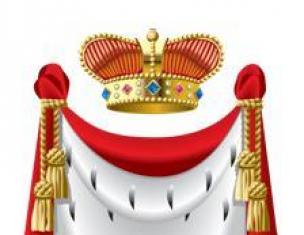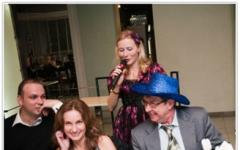Select option knitting edge loops It is very important and depends on how you will use the edge of the knitted web in the future: sewing, connecting parts with a certain seam; Digit loops over the edge for further knitting or edge will be as the completed open edge of the product. The edge loops usually consider the first and last loop and usually do not take them to the main pattern of the web, but sometimes the edge can recover from two and three loops from the edge. Consider the types of basic and decorative edges below.
The most common edge with education on the edge of the chain, such an edge is well suited for further stitching, forms a flat flat edge with a single disadvantage - it twists. When you knit this edge in the face row, remove the first loop as the facial (thread at work), then having a facial row, the last knit facial; Turning the work, in the involving row, the first loop is removed without tolding as an invalible (thread before work), and you knit the last loop.
Very similar edge with the same chain, in my opinion, with less twisting. In the face of the first loop, knit the facial crossed (for the rear wall), the last knit the classic facial, in the involve row, take the first and last loop, without told, like an invalible (thread before work).

To perform a clear edge without twisting knit edge with nodules, this edge looks harmonious in a handwriting. It fit almost as the first version of the edge with a chain, but in the face row, remove the first loop as an involnery, having a thread before work, last knit also face; In the involve row, remove the first loop as the front (thread at work), and let the last loop, knit the wrong.

If you need to get a dense, neat, not stretching edge, for example, for the open edge of the jacket, scarf, belt or bar, is well suited edge option "Double chain". Such an edge fit on two hinges at the beginning and at the end, when calculating loops, consider not two, and four loops. In the face: the first loop is removed as the front (thread at work), the second loop knit the face crossed, the penultimate loop knit the facial crossed, remove the last loop. In the involving row, the first and last loops knit posanced, and the second and the penultimate remove how the invalid (thread before work). If you knit the shelf for jacket, then apply the edge "double chain" on the open edge, and on the other there is a simple chain for further stitching.

Decorative No curly edge with a smooth chain on sides is suitable for decoring scarf, belt, straps and for other open edges of products. Takes on two hinges at the beginning and at the end of the canvas. In the face row, take the first loop as the front, the second knit the invalid, also at the end of the row, the penultimate loop knit the invalid, and the last remove without tie. Turning the work on the invalid side, the first two and the last two edge loops. Knit off.
In knitting, the edge loops play although not the main role, but nevertheless it is impossible to form smooth edges of the canvas without them. Their second name sounds like edge hinges of a knitwear. If you look at the standard knitting scheme, it is necessary to use the first and last buttercup of each row. There are exceptions when not only two, but four and more participate in the calculation.
So let's consider in more detail in the photo and video, which is the edge loops and which main techniques exist in knitting needles.




Loop along the edge of the chain
This technique is one of the most common in needlework. During stitching, thanks to such an edge, a smooth and flat edge of the product is formed. But there is one significant drawback - this is his twisting.
In order for such a pattern to connect to the knitting needles, it is necessary to remove the first loop in the front strip and continue to knit the row to the end. Then the mating should be turned over and remove the loop in the wrong row, but not to squeeze it. The final loop is made in withdrawal. The photo shows an example of what kind of edge knitting has.
There is another way where the edge loop is much less twisted than the previous one. The first loop in the facial row fit, making girth for the rear wall. The latter needs to be done by a classic way. From the inside the primary and the last loop is removed, but without tissue.
Edge with nodule
For knitting smooth and not twisted edges, the product knit a knotted edge. This species will look great in the boiless. This method of knitting with the needles is similar to the previous one, but still there is a difference. Holding a working thread in front of them, you need to remove the first loop as an involnery. The latter fit also face. From the offline you do such manipulations, just do it all the way around.
Double chain
If you want the product to have a dense and neat texture with a non-tensile edge, then the next option is suitable for you, in which the edge loops bind a double chain. A similar method most often can be found in scarves, belts and open edges of the jacket. This edge is made with spokes on two hinges, which are recruited at the beginning and at the end of the strip. The initial one is removed on the front side, and the second is argued with a crossed way. The penultimate in the row fit also with an excitement, and the final simplicity is removed. On the reverse side, the first and last buttercups knit off, of the two remaining, the first is removed, and the second is made in withdrawal. When you decide to knit a jacket shelf, you need an open edge to knit by a double chain, and another ordinary chain to sew them later.
Decorative edge
Such a pattern will look even and not twisted from the sides. It is suitable for open edges of scarves and belts. To do this, you need to take two loops that are at the beginning of the strip and at the end. On the front side, the first is removed, and the second is made in withdrawal. The same happens with the last two loops. If you turn the work on the other side, you need all four edges to check with an invalion.
Pearl edge
The pearl method of knitting edge loops is used to process the edges of the plaid and chalese. This pattern is not subject to twist, does not stretch, and the appearance remains very neat. These edge hinges bind on the basis of three loops. If you knit from the face, then you need to do the first and third, and the second facial. The latter in the row of the loops are made exactly the same scheme. On the wrong, the work is performed in such a sequence: the front, then the wrong and again facial.
Now you can pull out one of the spokes, take it into the right hand, and the knitting needles are in the left and proceed to knitting. The thread, coming from the tangle, should lie on the left hand of the left hand and clamped with the rest of the fingers along with the needle.
Then, with the right spit, we capture the extreme loop with the left knitting the movement on the right left and remove, without inflating (Fig. 5). And further at the beginning of each row, the extreme loop (called the edge) will be removed. T. about., Knitted canvas has two edge loops, they serve to form the edge or side edge of the canvas. Therefore, the appearance of the edge depends on how you check the edge.
There are 2 main ways to inspect the edge loop, as a result of which the edge edge of the "chain" and the edge edge "nodel" is formed.

1. Edge edge "chain" (Fig. 6) It is formed if the edge loop at the beginning of the row is removed, the thread before work, and at the end of the row to silent the face loop. At the same time, for every 2 rows of the knitted web there are one edge loop.
Such an edge is suitable for almost all patterns, and it is most common, especially in cases where it is assumed that the edge loops will be removed in the seam.

2. Edge edge "nodel" (Fig. 7) is formed if the edge loop at the beginning of the row is removed, the thread is at work, and at the end of the row to squeeze the facial. In this case, 2 rows of knitted web also account for 1 edge loop. However, the "knot" edge edge differs from the edge of the "chain" by the fact that it is less stretched, so it is recommended to perform it in cases where you need to get an open edge, for example, when performing straight planes, vests, vertical openings for buttons, etc. d.
In any case, both edges of the knitted part must be made equally, otherwise one edge will be longer than the other.
In some cases, the edge loops are not removed, as described above, and they are in the same way on both sides). In this case, 1 rod of the knitted web is 1 edge loop, and the edge edge is obtained more stretched than the basic product, so the method of removing the edge loops is still preferable.
The edge loops are not included in the loop account, of which the pattern is built. That is, if in the description it is indicated that you need to dial 20 loops, then this means that 2 of them are edge (one on both sides), and the remaining 18 loops are involved in the formation of the pattern.
Edge loops
Select option knitting edge loops It is very important and depends on how you will use the edge of the knitted web in the future: sewing, connecting parts with a certain seam; Digit loops over the edge for further knitting or edge will be as the completed open edge of the product.
The edge loops usually consider the first and last loop and usually do not take them to the main pattern of the web, but sometimes the edge can recover from two and three loops from the edge. Consider the types of basic and decorative edges below.
The most common edge with education on the edge of the chain, such an edge is well suited for further stitching, forms a flat flat edge with a single disadvantage - it twists.
When you knit this edge in the face row, remove the first loop as the facial (thread at work), then having a facial row, the last knit facial; Turning the work, in the involving row, the first loop is removed without tolding as an invalible (thread before work), and you knit the last loop.

Very similar edge with the same chain, in my opinion, with less twisting. In the face of the first loop, knit the facial crossed (for the rear wall), the last knit the classic facial, in the involve row, take the first and last loop, without told, like an invalible (thread before work).

To perform a clear edge without twisting knit edge with nodules, this edge looks harmonious in a handwriting. It fit almost as the first version of the edge with a chain, but in the face row, remove the first loop as an involnery, having a thread before work, last knit also face; In the wrong answer, remove the first loop as the facial (thread at work), and the last loop knit the wrong

If you need to get a dense, neat, not stretching edge, for example, for the open edge of the jacket, scarf, belt or bar, is well suited edge option "Double chain". Such an edge fit on two hinges at the beginning and at the end, when calculating loops, consider not two, and four loops. In the face: the first loop is removed as the front (thread at work), the second loop knit the face crossed, the penultimate loop knit the facial crossed, remove the last loop. In the involving row, the first and last loops knit posanced, and the second and the penultimate remove how the invalid (thread before work). If you knit the shelf for jacket, then apply the edge "double chain" on the open edge, and on the other there is a simple chain for further stitching.

Decorative No curly edge with a smooth chain on sides is suitable for decoring scarf, belt, straps and for other open edges of products. Takes on two hinges at the beginning and at the end of the canvas. In the face row, take the first loop as the front, the second knit the invalid, also at the end of the row, the penultimate loop knit the invalid, and the last remove without tie. Turning the work on the invalid side, the first two and the last two edge loops. Knit off.

Beautiful pearl Edge It is well suitable for knitting edge shawl, scarf or for the edge edging of the plaid. The pearl pattern does not twist, not stretching and looks very neat. This edge fit on three hinges at the beginning and at the end of the canvas: on the front side, knit the invalid, the second facial, the third wrong: the last three loops in the same order: the wrong, facial, insane. In the opposite, involving row, the first and last three loops knit in the following order: facial, irons, facial.

Getting Started to knitting, novice needlewomen sometimes face a problem - how to finish a row, so that the edge of the canvas looked smoothly. For this purpose, the edge loop is served, the rules of knitting which is devoted to the article.
Reconnection of the edge loop
The edge is called a loop that opens and closes the row. It is necessary so that the knitted canvas look neat, its edges were not deformed and easily could connect with other parts of the product. The edge of the canvas is called the vertical edge of knitting. Depending on how it is framed, a different result is obtained. For example, if the extreme hinges at the beginning and at the end of the row to be sled, it turns out a canvas with a tensile edge. If the edge to shoot at the beginning of the row, and the last to be lied, then the knitted canvas will not stretch. The edge loop is performed either face or invalid. The difference is that when unsubscribing the facial - the working thread is located at work, and the invalid - before work. When the loop is removed, without told, at the beginning of the row, and the reinforce the last, you should always pay attention to the position of the working thread. It must be behind the needle.
Types of edge loops
They can be diverse, their design largely depends on the main drawing of the product. From whether you want to hide the edge loops with a connecting seam, or you will be inserted into the disposal or bar, the selection of this or that their species will depend.
For the seam, the following version of the edge loops is suitable - "nodule". The first row is knitted by facial loops. The second row - the edge is removed, the rest are tied by the purl, the last loop of the row is facial. Thus, it turns out the nodule edge when the lateral loops in the wrong rows are facial. It turns out that two rows are only one edge loop. The "knot" edge is suitable for a seam called "through the edge".
To lift the loops in each row, the first loop, without tissing, removed. Next knit on the rapport. It turns out that the removed loop will be stretched for 2 rows. Therefore, it turns out from the "chain" loops, which is very clearly visible during their uplift.
Perfectly fit the edge loops for the processing of the open edge: vertical openings for buttons, vests, jacket planks. For example, a bar knit a single elastic band in which loops for buttons are provided. The edge loop is drawn up as follows. In the first row of the front side, remove the first loop, then alternate 1 facial and 1 purl to the end. The second row knit with a rubber band, the last to learn the front. Alternate these two rows until the necessary height has been achieved.
Sometimes for the planks use the pattern called "confusion", it is also called a reverse elastic band. The number of disgraced loops should be even. The first rail to knit in the sequence: one wrong one, one facial. Continue to the end of the row. The second row start with two further knit alternately and inside, so to check until the end. Such an edge is used when performing some parts of the product that require dual edge knage. Please note that if there is no explanation in the product description, then the facial loops on the pattern should be removed as facial, the invalid is removed as an invalid. At the beginning of each row, the edge loop with the needles is removed as usual, the next front wall behind it is proclaiming. The penultimate in the next row is removed unsets, and the working thread must be located before the loop.
For practice, you can make a number of a small number of loops, to penetrate them. The right edge of your knitting is best noted with the help of a color thread. Now in the right side knit face loops with the use of double edge. The usual edge loop tackles on the left.









